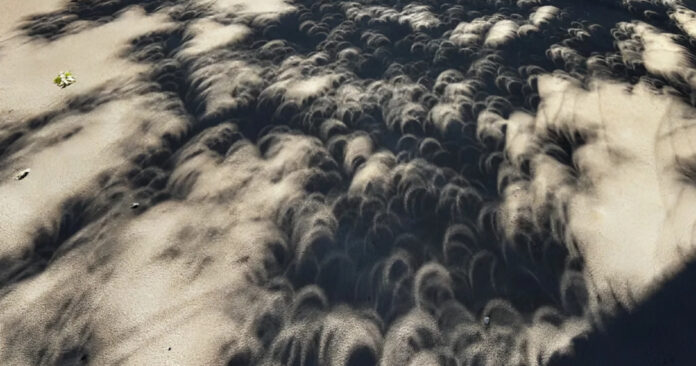As the moon blotted out the sun during last week’s total solar eclipse over eastern Canada, skywatchers in Montreal were treated to an unusual spectacle beyond the fleeting moments of totality. In the partial phases before and after the moon’s passage, the eclipse created striking visual effects – sharply defined contrail shadows and a brilliant halo around the crescent sun.
The first phenomenon occurred just after the total eclipse ended. As the moon began moving off the sun’s disk, allowing rays of sunlight to emerge, a jet airplane crossing high overhead cast a dark, distinct shadow onto the clouds below from its condensation trail.
“Shortly after totality, the sun is a thin crescent which tends to make shadows much sharper, thus accentuating the shadow of the jet contrail,” explained Fred Espenak, a retired NASA astrophysicist known as “Mr. Eclipse” for his eclipse expertise.
While airplane contrails frequently cross the sky, their shadows are usually too diffuse to notice in normal daylight conditions. It was the slim crescent shape of the re-emerging sun that boosted the contrast, making the dark trail dramatically visible against the bright background.
Though it appeared the shadows were being cast upwards onto higher clouds from reflected light, this was an optical illusion. The contrail’s sharp-edged shadow was in fact being projected downwards by sunlight.
If the crisply-shadowed contrail was an unanticipated treat, the second visual delight over Montreal was a more predictable sight – but no less striking. Both before and after the brief total phase, a vivid 22-degree halo surrounded the partially eclipsed sun.
This circular ring of light is created by ice crystals in cirrus clouds refracting and reflecting sunlight at a specific angle, producing the halo effect. Named for the approximate 22-degree radius from the sun, these halos are a common atmospheric phenomenon visible on average over 100 days per year globally.
“Sun halos are optical illusions created when ice crystals form in the correct shape in the upper atmosphere, usually accompanying thin, wispy cirrus clouds,” said Walter Tape, an emeritus math professor at the University of Alaska Fairbanks who studies halos extensively.
While halos can form around either the sun or moon, they are most easily spotted circling the sun. The crystals must be aligned in a precise orientation to generate the circular ring of light. Additional rare variations can appear as arcs or multiple rings in vivid colors.
Though commonly seen in polar regions, halos can materialize anywhere given the right cloud conditions. The eclipse offered perfect viewing circumstances for Montrealers to witness this atmospheric optics effect surrounding the partially obscured sun.
For those caught by surprise at these bonus cosmic visuals, the eclipse’s grand finale may have been the most memorable sight of the day. But the contrail shadows and sun’s halo provided an out-of-this-world prelude and encore to the total eclipse over Canada’s largest metropolis.





















